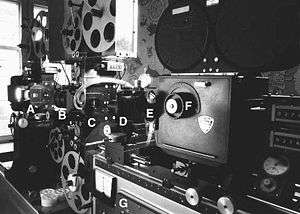Wet-transfer film gate
A wet-transfer film gate, or wet gate for short, is a film gate that is submerged in liquid, used for film restoration and archival scanning. Submerging the film in the gate in a liquid with a suitably matched refractive index reduces the effects of scratches on the film, by reducing the refractive effects which divert light that passes through the scratched part of the film. The liquid also acts to lift other forms of defect from the film.[1] Perchloroethylene, a hazardous substance with multiple health and safety risks, is commonly used as the liquid medium in wet gate systems,[2] requiring substantial precautions to be taken to ensure the safety of operators and to prevent pollution.[3]

Wet gate transfer is often preceded by other forms of film cleaning, such as the use of ultrasonic film cleaners.
References
- "ARRI Presents Wet Gate for 16mm Scanning". ARRI. Archived from the original on June 7, 2014. Retrieved 2014-06-02.
- Douglas Bankston. "Wetgate Scanning by Imagica". American Society of Cinematographers. Retrieved 2014-06-02.
- "Use of Perchloroethylene in Motion Picture Wet-Gate Printing" (PDF). Kodak. Retrieved 2016-02-20.
See also
- Registration pin
- Optical printing#Restoration printing
- Full immersion wet-transfer film gate